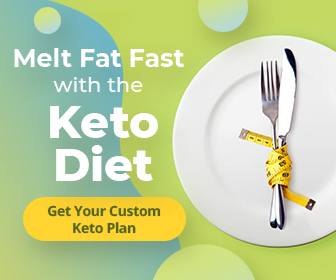Embarking on a ketogenic journey? Understanding and optimizing your macronutrient intake is key to achieving success on a keto diet. Let’s delve into the intricacies of macros, explore ideal ratios, and uncover valuable insights to enhance your low-carb lifestyle.

Tracking Net Carbs: The Keto Conundrum
Macros are the nutrient ratios that you adhere to whenever you get on a low carb or keto diet. Typically, most keto dieters follow a plan that allows between 60-75% fat grams, between 15-30% protein grams and between 5-10% grams of carbs according to the total number of calories consumed.
Net carbs contain deducting dietary fiber from total carbs. Since fiber would not impede ketosis, it’s a negligible element in your macro calculations. Pro tip: When opting for low-carb packaged meals, the internet carbs are your holy grail. For instance, Slim Fast High Protein shakes boast 6 overall carbs, however subtracting 5 grams of dietary fiber exhibits a trifling 1 net carb.
One thing you need to know is that most people track their net carbs, not their total carbs. Tools like MyFitnessPal will automatically track your total carbs, but you can use Chrome Extensions like Tamper Monkey to get the net carbs calculated within MyFitnessPal.
Net carbs contain deducting dietary fiber from total carbs. Since fiber would not impede ketosis, it’s a negligible element in your macro calculations. Pro tip: When opting for low-carb packaged meals, the internet carbs are your holy grail. For instance, Slim Fast High Protein shakes boast 6 overall carbs, however subtracting 5 grams of dietary fiber exhibits a trifling 1 net carb. The fiber won’t negatively affect you, so it’s a non issue when calculating your macros to track.
Tailoring Macros to Your Lifestyle
Carb Considerations for Athletes
Fitness enthusiasts, fear not! If you’re hitting the gymnasium rigorously, a barely better carb intake (around 30 grams) may additionally gas your energetic life-style better than the standard 20 grams. However, for the sedentary souls, sticking to the 20-gram carb limit is the golden rule.
If you buy low carb packaged foods, they’ll often have the net carbs listed on the front of the package. Slim Fast High Protein shakes, for example, have 6 total carbs. But when you subtract the 5 grams of dietary fiber, it means the drink has a total of 1 net carb.
If you’re extremely athletic, then you might want to go on the higher end of the carb intake – the 30 grams, as opposed to 20. But that’s only because your body needs more fuel, so if you’re sedentary, stick to the 20 grams instead.
Micronutrients: The Unsung Heroes
While macro nutrients take the spotlight, don’t forget micronutrients—the nutrients and minerals crucial for basic fitness. When calculating macros, ponder the impact of those microscopic powerhouses in your properly-being.
When you calculate the macro nutrients, you’ll want to think of the micronutrients that could impact your health, too. These are the vitamins and minerals you need to ensure you get plenty of for your meals.
You can ensure this by choosing the right carbohydrates for your diet. Carbs are what your body uses for fuel, until you go into a state of ketosis and it begins burning fat instead.
Strategic Carb Choices for Optimal Results
Carbs function your body’s primary fuel till the mystical country of ketosis kicks in, ushering in fat-burning bliss. Choose wisely with the aid of opting for leafy greens as your carb supply, enriching your keto weight loss plan with critical vitamins and minerals.
You’d probably be shocked if you tallied up how many carbs you normally consume on a regular basis. It’s not just sitting down with a bag of potato chips – it’s the hidden carbs found in ketchup, for example, that send your numbers soaring. Choose leafy greens as your carbs so that you enjoy plenty of vitamins and minerals with your keto diet.
Protein: Striking a Delicate Balance

Resist the protein overload temptation! Excessive protein can pressure your kidneys. Stick to macro levels that offer sufficient protein for tissue increase and restore, maintaining a delicate equilibrium in your body’s needs.
Don’t overload on the protein, because it can negatively impact your kidneys. Stay at the right macro levels that allow your body the necessary protein to grow and heal tissue in the body.
Fats: The Building Blocks of Energy
Your preference of fats can make or break your keto journey. Opt for fat that energize your frame, facilitate diet absorption, and make a contribution to cell fitness. Bid farewell to trans fat and include the goodness of avocados and salmon for a more fit, greater sustainable keto revel in.
The fats you choose will help energize your body and use the vitamins you take in. It will keep your hair and skin balanced and contribute to healthy cells. Avoid trans fats and focus on healthy ones, like those found in avocados and salmon.
Conclusion
In conclusion, gaining knowledge of the art of macros is your gateway to unlocking the overall ability of a ketogenic lifestyle. Tailor your nutrient intake, make knowledgeable alternatives, and watch as your frame transforms on this exhilarating low-carb journey.










